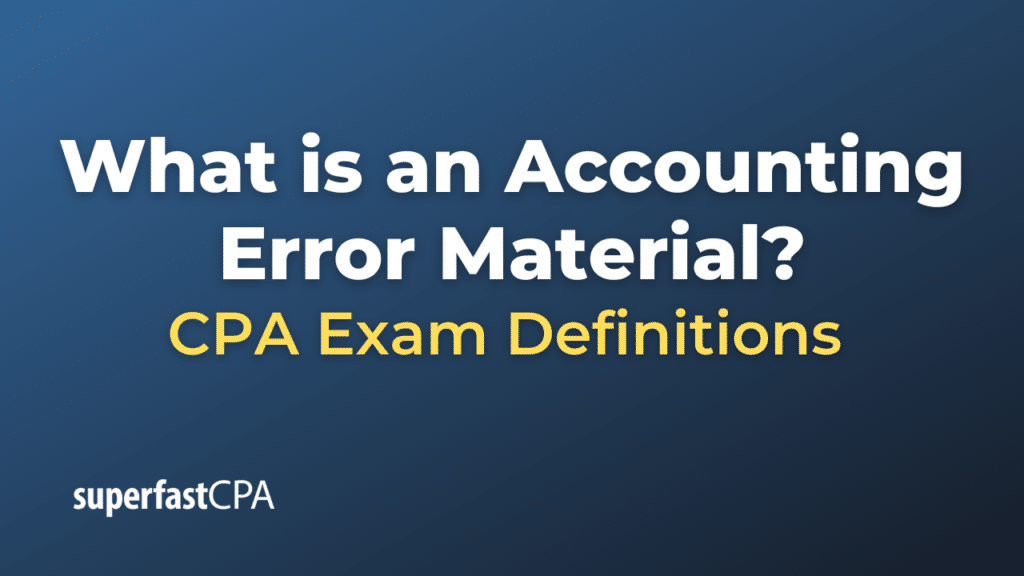Accounting Error Material
An accounting error is considered “material” if its occurrence or omission could influence the economic decisions of the users of financial statements. In other words, a material accounting error is one that is significant enough to mislead investors, creditors, or other stakeholders when they are assessing a company’s financial condition or performance.
Determining materiality is subjective and often involves both quantitative and qualitative factors:
Quantitative Factors:
Quantitative factors are numerical and often expressed as a percentage of some financial statement metric like net income, total assets, or revenue. For example, a company might set a materiality threshold at 1% of total assets. If the accounting error exceeds this threshold, it would likely be considered material.
Qualitative Factors:
Qualitative factors are non-numerical considerations. An error might be considered material due to its nature rather than its size. For example:
- Errors that affect regulatory compliance
- Errors that influence key performance indicators
- Errors that could impact a user’s understanding of trendlines in financial performance
- Errors that affect contractual covenants like debt ratios
Handling Material Accounting Errors:
If an accounting error is determined to be material, the financial statements usually need to be restated. Restating financial statements involves correcting the error and reissuing the financial statements as if the error had never occurred. Publicly traded companies typically also issue a public announcement, notifying investors and other stakeholders that the financial statements are being restated.
Example of an Accounting Error Material
Let’s consider a practical example to illustrate the concept of a material accounting error:
Imagine a publicly traded retail company named “RetailCo” that initially reported annual net income of $2 million for the fiscal year. Later, it was discovered that an accounting error led to an overstatement of inventory by $300,000.
Determining Materiality
Quantitative Factors:
- The overstatement represents 15% of the net income ($300,000 / $2,000,000 = 0.15 or 15%).
- Based on the company’s internal guidelines, errors exceeding 5% of net income are considered material.
Qualitative Factors:
- The overstated inventory could mislead investors about the company’s liquidity and efficiency in inventory management.
- The error could also affect compliance with loan covenants based on financial ratios, which would have legal implications.
Conclusion on Materiality
In this case, the error is considered material both from a quantitative standpoint (exceeding the 5% threshold of net income) and from a qualitative standpoint (potential to mislead investors and affect loan covenants).
Accounting Actions
RetailCo would have to take several steps to correct this material accounting error:
- Restate Financial Statements: RetailCo would need to reissue corrected financial statements for the fiscal year, adjusting for the $300,000 inventory overstatement.
- Public Disclosure: Given that RetailCo is publicly traded, it would have to issue a public announcement about the restatement, explaining the nature and impact of the error.
- Regulatory Filing: In some jurisdictions like the United States, RetailCo might also have to file amended forms with regulatory bodies such as the Securities and Exchange Commission (SEC).
- Auditor’s Report: The auditors might also issue a revised audit opinion, depending on the circumstances.
Revised Journal Entry
The original erroneous journal entry might have been:
Dr: Inventory $300,000
Cr: Accounts Payable $300,000The correcting journal entry would then be:
Dr: Accounts Payable $300,000
Cr: Inventory $300,000By taking these steps, RetailCo would correct the material accounting error and provide a more accurate and reliable picture of its financial health to its stakeholders.













